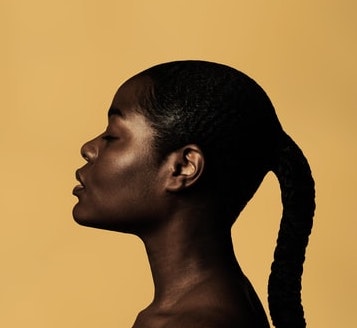I’m sure it comes as no surprise to you that Covid has forced fashion businesses to accelerate their digital transformation. Technology has become more of a necessity than ever before, rather than just something experimental, hence the rise of virtual influencers and models.
The computer-generated images (CGI) help to promote products and share fashion content. Brands ask their agencies such as @thediigitals if they can digitally wear their designs, just like real-life models. An example, I’m sure most of you are familiar with is Lil Miquela, who has racked up 3million followers and collabed with many well known brands.

CGI Humans as a marketing Strategie
Virtual Influencers have almost three times more engagement than real influencers now (shocking, I know). Research revealed that consumers’ interaction with digital humans may change the way businesses interact with consumers regarding communication channels. The findings unveil positive consumer attitudes towards interacting with digital humans. However, it is interesting to note that men were significantly more positive towards their intention to interact with digital humans than women.
So, what effects will virtual models have on consumers?
In the fashion industry, the most common concerns for consumers are what CGI models mean for setting realistic body standards and the overall influence on body image. The negative impact of fashion models on appearance is not new to us. There is already numerous criticism relating to the number of images of models with a slim physique and activists campaigning against the false representation of beauty on social media. There is no wonder that virtual models would have an impact on consumers who desire to possess a thin image and be seen as fashionable.
Transparency and Authenticity
Now due to the rise of technology we have the most perfect models who don’t even really exist marketing our clothes. So, with authenticity already a big issue wouldn’t you agree CGI models are a step too far?
Shudo Gramm is another famous virtual model, she is based on a barbie doll, the princess of South Africa, instead of a real person. At least when we were younger we knew that Barbie was just a doll, but will younger children think she is real?
A study implied that early exposure to dolls epitomising an unrealistically thin body ideal may damage girls’ body image, which would contribute to an increased risk of disordered eating and weight cycling. So if toy dolls weren’t bad enough, we now have models based on dolls but without really knowing if they are real.

Virtual Models and Social Comparison
From a psychological perspective, one of the negative consequences of virtual models is social comparison. Instagram has created a ‘comparison culture’ amongst its users and the lack of transparency of models is a big issue in terms of social comparison. ‘Social Comparison Theory’ suggests individuals drive to evaluate their progress and in the absence of objective standards, people compare themselves to others to know where they stand.
Women that define self-worth by meeting idealised beauty standards could be more likely to engage in social comparisons. This is because the tendency to base one’s self-worth on appearance often has negative consequences for affect and esteem. It can also negatively influence consumers to engage in behaviour in an attempt to achieve unrealistic beauty standards.
Upward comparisons occur when consumers compare the self, often subconsciously, with a model’s body as it is perceived to be “better”, but this can lead to negative self-perceptions.
But, are virtual models really that bad?
With everyone using GCI more often such as Instagram filters and being constantly exposed to retouched models in beauty marketing they can be argued to be just like what we already have.
Cameron James Wilson, the creator of Shudu said he’s “adding imperfections rather than taking them away, you’ll see more natural imperfections on Shudu’s page than your average influencer.” A Virtual plus-size model with visible stretch marks has also been introduced, Shudu sister, and Lil Miquela has posted displaying her armpit hair. This suggests that using virtual images as a marketing strategy could be used to promote self-acceptance, prosocial emotions and enhance self-esteem.
Ads are more effective when the physical features of human models match those of consumers, so consumers may be more likely to purchase as the model looks more similar to them. As people prefer brands that are humanised, so basically the more human-looking these nonhumans look, the better. Consumers may think, if even the most perfectly made models have these perceived flaws mine must be accepted?

To sum up, though brands should embrace new technologies that add value for the consumer, they should be wary of the ethical challenges that CGI influencers pose to an industry that should be built on transparency and authenticity.
I think it’s all about curating your feed, Instagram is said to be one of the most inclusive platforms if we use it properly and limit our exposure to unrealistic beauty standards.



